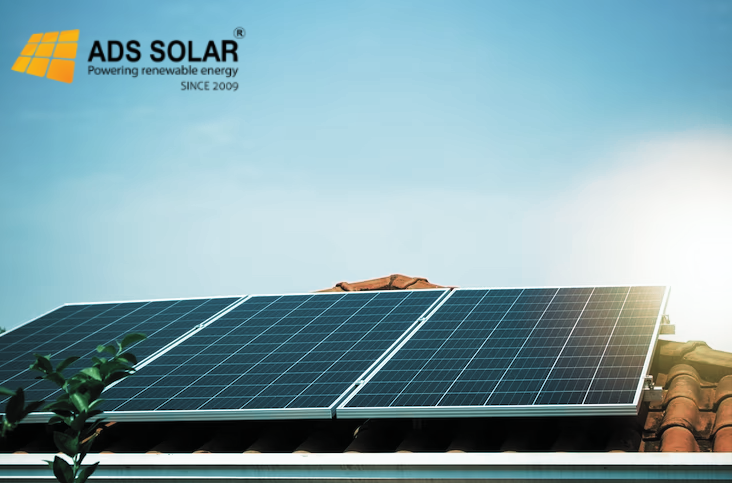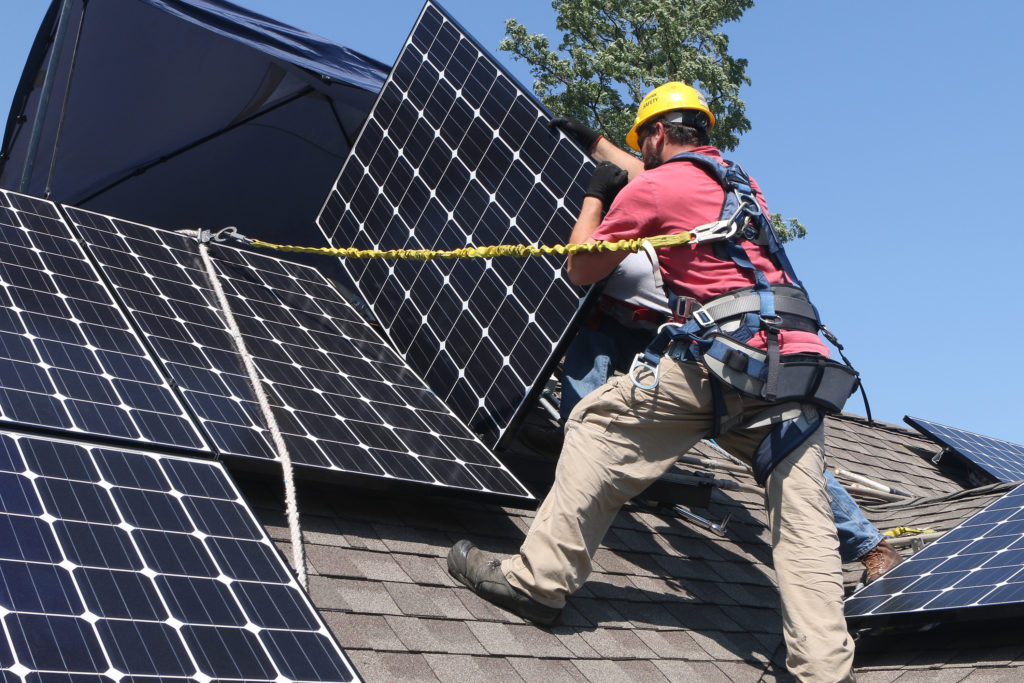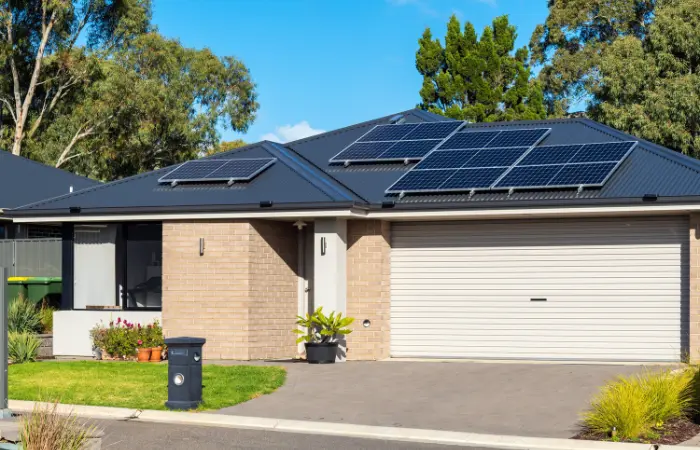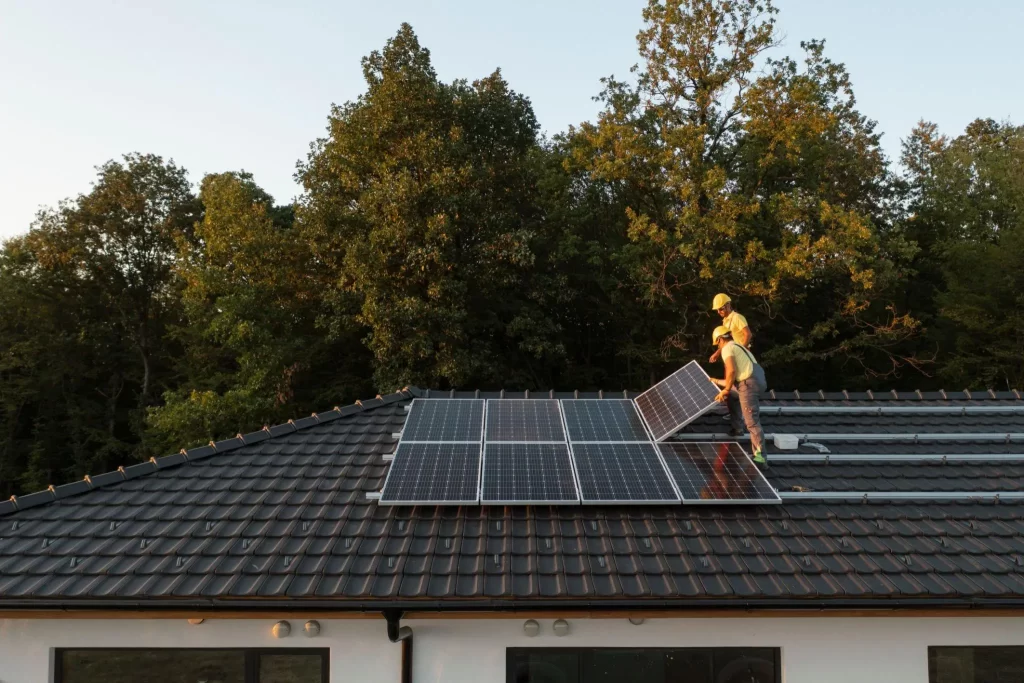Harnessing the Sun: Exploring the Cost and Benefits of a 6.6kW Solar System with a 5kW Inverter in Australia
Introduction: Discover the power of the sun Down Under! In this article, we delve into the world of solar energy in Australia, focusing on the 6.6kW solar system equipped with a 5kW inverter. Uncover the benefits, costs, and considerations that make this renewable energy solution an increasingly popular choice for homes and businesses.
Brief overview of solar energy in Australia
Australia is a solar energy hotspot, blessed with abundant sunlight. With over 2 million solar installations, the country has embraced solar power on a large scale. The government’s initiatives, favourable climate conditions, and decreasing solar technology costs contribute to the nation’s growing reliance on clean and sustainable solar energy solutions.
Importance of solar power for residential and commercial use
Solar power holds immense significance for both residential and commercial sectors in Australia. For homeowners, it offers a sustainable and cost-effective alternative, reducing electricity bills and providing energy independence. In the commercial realm, solar systems contribute to corporate sustainability goals, lower operational costs, and enhance environmental responsibility. The adoption of solar power aligns with global efforts to combat climate change, making it a pivotal player in Australia’s transition towards a cleaner and greener energy future.
Focus on the 6.6kW solar system with a 5kW inverter
The 6.6kW solar system paired with a 5kW inverter stands out as an optimal solution for harnessing solar energy in Australia. This combination maximizes energy production, ensuring efficiency in converting sunlight into usable electricity. The 5kW inverter, a crucial component, plays a key role in managing and optimizing the power generated by the system. Together, they present an ideal setup for residential and commercial spaces, promising substantial energy savings and environmental benefits.
Understanding the Components
In the realm of solar energy systems, understanding the key components is essential. Let’s delve into the critical elements that constitute the 6.6kW solar system with a 5kW inverter.
Explanation of solar panels
Solar panels are the backbone of any solar energy system, serving as the primary devices responsible for converting sunlight into electricity. Here’s an in-depth look at the key aspects of solar panels:
Types and efficiency
- Monocrystalline vs. Polycrystalline Panels:.
Monocrystalline: Composed of single-crystal silicon, these panels are known for higher efficiency and a sleek black appearance.
Polycrystalline: Made from multiple crystal structures, these panels are cost-effective but slightly less efficient than monocrystalline counterparts.
- Efficiency Ratings:
Understanding efficiency percentages (typically ranging from 15% to 22%) and their impact on the amount of electricity generated.
Suitable brands and models
- Reputable Solar Panel Manufacturers:
Overview of well-established solar panel manufacturers with a track record of reliability and performance.

- Recommended Models for Optimal Performance:
Highlighting specific solar panel models that are known for high efficiency, durability, and compatibility with the 6.6kW solar system. Solar panels play a pivotal role in harvesting sunlight and converting it into clean, renewable energy, making them a critical consideration when investing in a solar power system.
In-depth look at the 5kW Inverter
The inverter is a critical component of a solar power system, responsible for converting direct current (DC) generated by solar panels into alternating current (AC) suitable for household or commercial use. Let’s take a closer look at the 5kW inverter in the context of a 6.6kW solar system:
Role and Importance
- Inverter Function: Explanation of how the inverter facilitates the conversion of DC electricity generated by solar panels into AC power for use in homes or businesses.
- Optimizing Energy Output: The role of the inverter in maximizing energy production, ensuring efficiency, and managing fluctuations in sunlight.
Compatible Inverters for the 6.6kW System
- Inverters Suitable for Residential Applications: Identification of specific inverters designed for residential use, considering factors such as size, compatibility, and performance.
- Features to Consider When Choosing an Inverter: Overview of key features like efficiency ratings, monitoring capabilities, and warranty terms to guide consumers in selecting an inverter that aligns with their system requirements.
Understanding the intricacies of the 5kW inverter is crucial for ensuring the overall effectiveness and reliability of the 6.6kW solar system, as it directly impacts the quality of the electricity generated and its usability for various applications.

Advantages of a 6.6kW Solar System
The 6.6kW solar system offers a range of advantages, making it a popular choice for both residential and commercial applications. Let’s explore the key benefits:
Increased energy production
- Higher Energy Output: The larger capacity of the 6.6kW system translates to increased energy production, making it suitable for larger energy needs or households with high electricity consumption.
- Optimal for Medium-Sized Installations: Ideal for medium-sized residential properties or small to medium-sized businesses, striking a balance between affordability and energy production.
Potential for surplus energy
- Feed-In Tariffs: Opportunities to generate surplus electricity, which can be fed back into the grid, potentially earning users feed-in tariffs or credits.
- Energy Storage Compatibility: Integration with energy storage solutions, such as batteries, to store excess energy for later use during periods of low sunlight.
Environmental benefits
- Reduced Carbon Footprint: Lower carbon emissions as a result of increased reliance on clean, renewable energy sources, contributing to environmental sustainability.
- Promotion of Green Practices: Demonstrates a commitment to environmentally friendly practices, aligning with global efforts to combat climate change.

Return on investment considerations
- Quicker Payback Period: Potential for a faster return on investment due to higher energy production and potential savings on electricity bills.
- Government Incentives: Eligibility for government incentives, rebates, and tax credits, enhancing the financial viability of the solar investment.
The 6.6kW solar system, with its increased capacity, positions itself as a robust and cost-effective solution for those seeking to harness solar power for both economic and environmental advantages.
Choosing the Right System for Your Needs
Selecting the right solar power system involves a thoughtful consideration of various factors to ensure it aligns with your specific needs. Here’s a guide to help you make an informed decision:
Assessing energy requirements
- Evaluate Current Energy Consumption: Review your electricity bills to understand your average and peak energy consumption, providing a baseline for system sizing.
- Future Energy Needs: Consider any changes in energy usage patterns or future expansions that may impact your electricity requirements.
Budget considerations
- Upfront Costs: Analyze your budget constraints and determine the initial investment you can comfortably make for the solar system.
- Long-Term Savings: Assess the potential long-term savings on electricity bills to gauge the return on investment over the system’s lifespan.

Price Breakdown
Understanding the costs associated with a 6.6kW solar system with a 5kW inverter is crucial for effective financial planning. Let’s break down the expenses involved:
Cost of the 6.6kW solar system
- Solar Panels: Breakdown of the cost per panel, considering the chosen type (monocrystalline or polycrystalline) and brand.
- Inverter: In-depth analysis of the cost of the 5kW inverter, including different models and their price variations.
- Mounting and Racking: Expenses related to the mounting structure for the solar panels, ensuring secure installation.
- Balance of System (BOS) Components: Additional components such as wiring, junction boxes, and other accessories required for a fully functional solar system.
Additional expenses (installation, maintenance, etc.)
- Installation Costs: Labor costs associated with the installation process, which may vary based on the complexity of the installation and local labor rates.
- Permitting and Inspection Fees: Fees associated with obtaining necessary permits and inspections to ensure compliance with local regulations.
- Shipping and Delivery: Consideration of any shipping or delivery charges for the solar panels, inverter, and other components.
Comparative analysis with other solar systems
- Explore Alternative Systems: Compare the price of the 6.6kW system with other solar configurations to understand the cost-effectiveness of your chosen setup.
- Long-Term Cost-Benefit Analysis: Consider the long-term financial benefits, including potential savings on electricity bills and government incentives, to evaluate the overall cost-effectiveness.
By breaking down the costs and considering both upfront and long-term financial factors, you can make an informed decision about the affordability and benefits of a 6.6kW solar system with a 5kW inverter.
Return on Investment (ROI) Analysis
Conducting a thorough Return on Investment (ROI) analysis is crucial to evaluate the financial viability of a 6.6kW solar system with a 5kW inverter. Here’s a comprehensive guide to performing an ROI analysis:
Estimating savings on electricity bills
- Current Electricity Costs: Calculate your current monthly and annual electricity costs based on your historical bills.
- Projected Savings with Solar: Estimate the potential savings by projecting the electricity generation of the 6.6kW system and factoring in your local utility rates.
Factoring in government incentives and rebates
- Government Rebates: Identify and quantify any government rebates, incentives, or tax credits applicable to your solar installation.
- Feed-In Tariffs: Assess the potential income generated by selling surplus energy back to the grid through feed-in tariffs.
Long-term financial benefits
- Lifetime Cost of the System: Calculate the total cost of the solar system over its expected lifespan, including initial investment, maintenance costs, and potential replacements.
- Net Present Value (NPV): Determine the NPV of the investment by discounting future cash flows back to their present value, considering factors like inflation and the time value of money.
By systematically analyzing these factors, you can gain a comprehensive understanding of the financial returns, risks, and broader impacts associated with your investment in a 6.6kW solar system with a 5kW inverter.
Installation Process
The installation process of a 6.6kW solar system with a 5kW inverter involves several crucial steps to ensure a seamless and efficient setup. Here’s a breakdown of the installation process:
Pre-Installation Assessment
- Site Evaluation: Conduct a thorough assessment of the site, considering factors such as roof orientation, tilt, shading, and available space.
- Structural Integrity Check: Ensure the structural integrity of the roof to support the solar panels and mounting system.
System Design and Component Selection
- System Design: Develop a detailed system design that includes the layout of solar panels, inverter placement, and electrical configurations.
- Component Selection: Choose the specific solar panels, the 5kW inverter, and other system components based on the design and energy requirements.
Permitting and Approvals
- Permit Acquisition: Obtain necessary permits from local authorities, adhering to regulations and building codes.
- Utility Approval: Seek approval from the utility company for grid connection, ensuring compliance with their requirements.
Installation
- Mounting Structure Installation: Install the mounting structure securely on the roof, ensuring proper alignment and tilt for optimal sunlight exposure.
- Solar Panel Installation: The solar panels to the mounting structure, connecting them in series or parallel according to the system design.
- Inverter Installation: Mount and connect the 5kW inverter, ensuring proper electrical wiring and compliance with safety standards.
- Electrical Wiring: Connect the solar panels, inverter, and electrical components, ensuring a well-organized and secure wiring system.

Connection to the Grid
- Grid Connection: Connect the solar system to the electrical grid, following local regulations and guidelines.
- Meter Installation: Install a bidirectional meter to measure both the electricity consumed from the grid and the surplus energy fed back.
Testing and Commissioning
- System Testing: Conduct comprehensive tests to ensure each component operates as intended, checking for any issues or malfunctions.
- Commissioning: Finalize the setup by commissioning the entire system, verifying its functionality and performance.
Monitoring System
- Monitoring Setup: Implement a monitoring system to track the solar system’s performance, energy production, and potential issues.
- Customer Training: Provide the system owner with training on monitoring tools and basic maintenance procedures.
Documentation and Warranty
- Documentation: Compile and provide all necessary documentation, including permits, warranties, and system specifications.
- Warranty Activation: Ensure the activation of warranties for solar panels, inverters, and other components.
Ongoing Maintenance
- Maintenance Plan: Establish an ongoing maintenance plan, including regular inspections and cleaning to maximize system efficiency.
- Troubleshooting: Provide guidance on troubleshooting common issues and contact information for technical support.
By following these steps, a comprehensive and well-executed installation process for a 6.6kW solar system with a 5kW inverter can be achieved, ensuring long-term reliability and optimal performance.

Maintenance and Monitoring
Maintaining and monitoring your 6.6kW solar system with a 5kW inverter is essential to ensure optimal performance and longevity. Here’s a guide on how to effectively manage the maintenance and monitoring aspects:
Regular maintenance requirements
- Visual Inspections: Conduct periodic visual inspections of the solar panels, checking for any physical damage, debris, or signs of wear.
- Cleaning: Keep the solar panels clean to maximize sunlight absorption. Regularly remove dust, dirt, and bird droppings that can reduce efficiency.
- Inverter Checks: Monitor the inverter for any unusual noises, warning lights, or error messages. Address any issues promptly.
- Electrical Components: Inspect all electrical components, including wiring and connections, for signs of wear, corrosion, or damage.
Monitoring energy production
- Online Monitoring Tools: Utilize the online monitoring tools provided by the solar system manufacturer or installer to track real-time energy production.
- Data Analysis: Analyze historical data to identify patterns, seasonal variations, and potential performance issues.
- Set Performance Benchmarks: Establish performance benchmarks based on expected energy production and compare actual results against these benchmarks.
- Troubleshooting common issues
- Fault Diagnostics: Train personnel or yourself to identify and troubleshoot common issues such as inverter faults, reduced energy production, or communication errors.
- Professional Assistance: For complex issues or if you’re unsure, seek professional assistance from the solar installation company or a qualified technician.
Conclusion
In summary, opting for a 6.6kW solar system with a 5kW inverter in Australia offers numerous benefits, including increased energy production and environmental sustainability. To make an informed decision, consider factors like energy needs, budget, and government incentives. Choosing a reputable installer and conducting regular maintenance are crucial for system efficiency. Embracing solar power not only makes financial sense but also contributes to a cleaner and more sustainable future.

Call Us Anytime
1300 812 911
